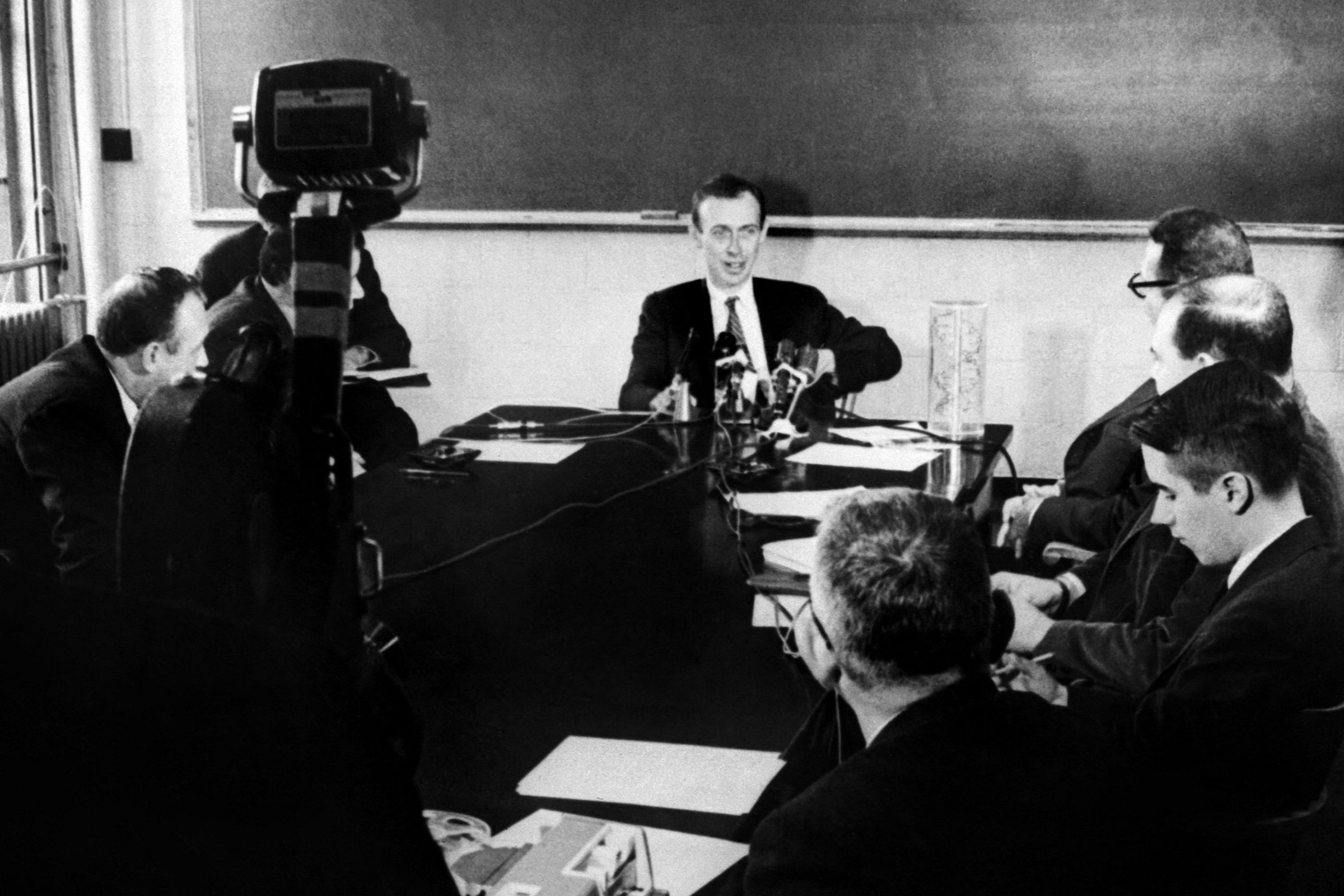James Watson, the American biochemist who has died at the age of 97, was responsible with Francis Crick of the UK for the most important biological discovery of the 20th century: the double helix structure of DNA, the molecule that carries genetic information.
During their two frantic years together at Cambridge university’s Cavendish Laboratory between 1951 and 1953, the brash and virtually unknown newcomers beat several famous scientists in the race to determine the shape of DNA.
Although nothing in his subsequent career could match the impact of the double helix discovery, Watson went on to make a distinguished long-term contribution to genetics and cancer research. However the professor’s personal reputation was tarnished by a growing tendency to make sexist and racist comments in later life.
Watson directed Cold Spring Harbor Laboratory in New York state from 1968 to 1994, building it up from an obscure and impoverished genetics lab into a wealthy and world famous centre for molecular biology. The lab confirmed his death on Friday. He also led the US Human Genome project, the effort to decode all genetic information, from 1989 to 1992.
James Dewey Watson was born into a modest middle-class family of Irish Catholic immigrants in Chicago on April 6, 1928. Radio audiences heard an early flash of his genius when he appeared on the popular Quiz Kids show aged 12.
He enrolled as an undergraduate at the University of Chicago at the age of 15, and completed his PhD (on a type of virus called phage) at Indiana University in 1950.
The crewcut American “postdoc” arrived at Cambridge at the age of 23. There he quickly converted the 35-year-old Crick to his enthusiasm for solving the structure of DNA and, although both men were supposed to be working on other research projects, they devoted most of their energy to it.
“Jim and I hit it off immediately,” Crick recalled, “partly because our interests were astonishingly similar and partly because a certain youthful arrogance, a ruthlessness and an impatience with sloppy thinking came naturally to both of us.”
Watson’s highly personal book The Double Helix, published in 1968, showed how unorthodox the pair’s methods were. Much of their laboratory time was stolen from their official research projects. Crick and Watson were essentially theoreticians, not experimenters — the observations on which they based their structure were sometimes obtained by subterfuge from other scientists, particularly Rosalind Franklin, Maurice Wilkins and Raymond Gosling at King’s College London.
If Crick and Watson had not worked together, the structure of DNA would no doubt have been elucidated in the 1950s by another scientific group working on the subject. But the boldness with which Crick and Watson discovered the double helix and presented its genetic consequences to the world made a big impact on the subsequent development of molecular biology.
As the biologist Sir Peter Medawar wrote in his review of The Double Helix: “The great thing about Watson and Crick’s discovery was its completeness, its finality.” A “piecemeal” solution would not have lit the way for future genetics research in the way Crick and Watson actually did.
Their rivals accepted almost immediately that the double helix had to be the right answer. Its immediate attraction was that it looked elegant, with two chains intertwined like spiral staircases. More importantly, it fitted the available evidence.
The huge DNA model that Crick and Watson built hurriedly by hand in the Cavendish Lab explained how genes could replicate, as the two spirals uncoiled and each acted as a template for the formation of a new chain. It suggested how genetic information might be coded: the sequence of chemical units (known as bases) along the chains would determine the precise structure of the proteins made by each individual. And it interpreted genetic mutations in terms of changes in these bases.
Although the collaboration between Crick and Watson had been so rewarding, they split up soon after making their great discovery. While Crick remained in Cambridge, Watson returned to the US, first to the California Institute of Technology and then in 1955 to Harvard University where he set up a molecular biology lab.
Watson shared the Nobel Prize for Medicine in 1962 with Crick and Wilkins.

In 1968, Watson, by this stage well known for his overt interest in “pretty girls”, married Elizabeth Lewis, an undergraduate at Radcliffe, Harvard’s women’s college. They had two sons, Rufus and Duncan.
Watson’s Cambridge experience had made him an enthusiastic Anglophile. He visited Britain frequently and gave Cold Spring Harbor the atmosphere of an English country estate as well as an international laboratory.
He was an enthusiastic supporter of the Human Genome Project from the moment it was proposed in the mid-1980s as a $3bn international effort to decipher all human DNA. But his leadership of the project’s US arm ended acrimoniously after three years in 1992.
Watson resigned after clashing with his boss Bernadine Healy, director of the National Institutes of Health, over issues including researchers’ involvement in private biotechnology companies and the patenting of newly discovered genes. He was concerned that traditional collaboration and the free exchange of scientific information were being undermined by excessive enthusiasm for filing patents and cashing in on relatively minor discoveries.
But Watson remained closely involved with the project up to the publication in February 2001 of the first draft of the 3bn letters of the human genetic code.
In old age Watson, who had always been prone to making provocative comments, said more than once that Black Americans were on average genetically less intelligent than whites. As a result he was ostracised by the scientific establishment.
The Cold Spring Harbor trustees removed him from all administrative roles at the lab and then in 2020 revoked his emeritus status and severed all connections with him.
A car accident in 2018 left Watson with serious memory loss. He lived in seclusion for the rest of his life.